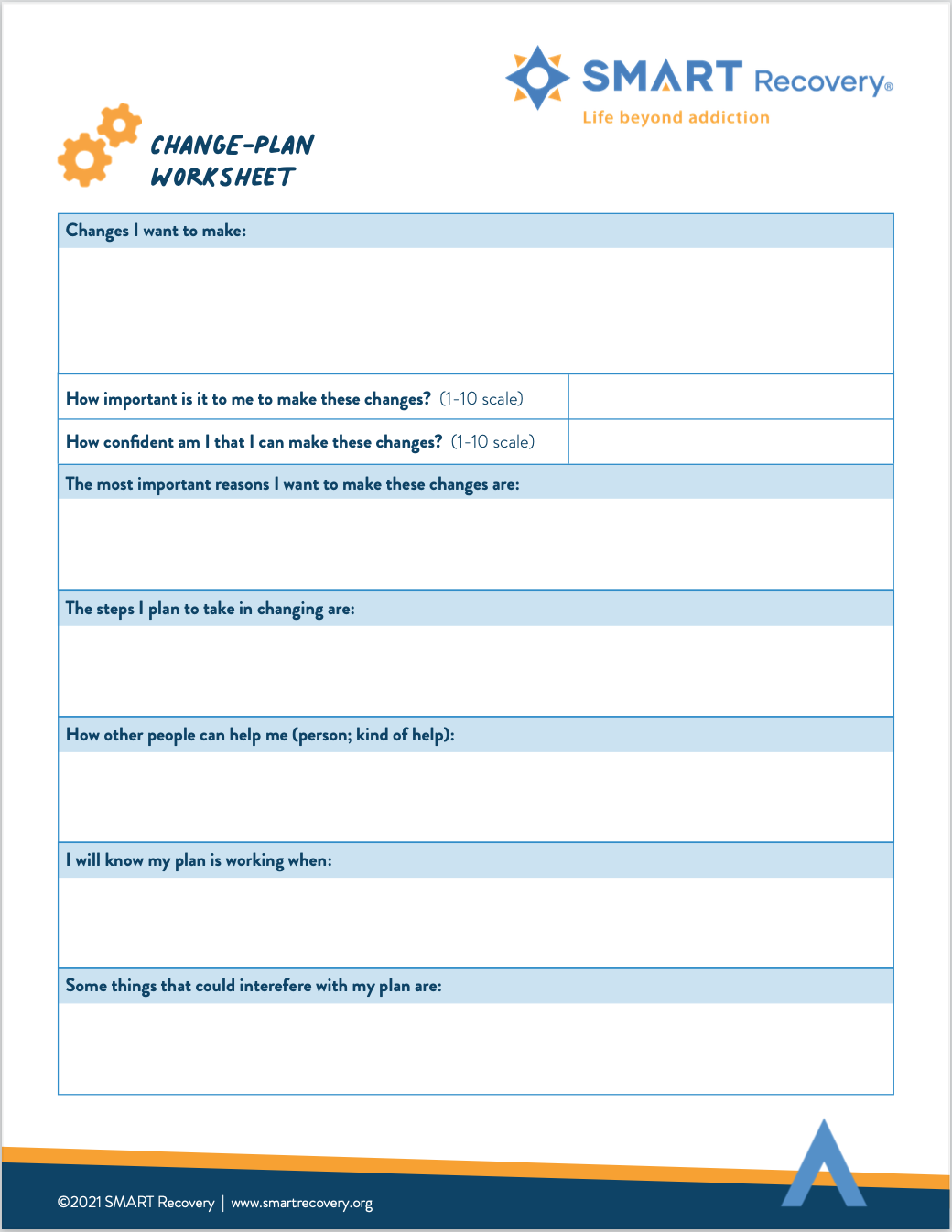Smart Recovery ABC Worksheet: Easy Guide for Mental Peace

Smart Recovery's ABC worksheet is a straightforward and effective tool designed to help individuals manage their emotional reactions, thoughts, and ultimately, behaviors. By engaging with this model, people can achieve a level of mental peace by understanding and reshaping their responses to life’s many challenges. In this guide, we will explore how to use the ABC worksheet, what each part means, and how it can lead to significant improvements in emotional well-being.
Understanding the ABC Model

The ABC model stands for:
- A - Activating Event: This is the trigger or situation that sparks a particular reaction. It could be something as simple as a spilled cup of coffee or as complex as a work-related conflict.
- B - Beliefs: These are the thoughts or interpretations you have about the activating event. Beliefs can be rational or irrational and significantly influence how we feel and act.
- C - Consequences: These are your emotional and behavioral responses to your beliefs about the event. The consequence can range from feeling frustrated to engaging in harmful behaviors.
How to Use the ABC Worksheet

Step-by-Step Process

- Identify the Activating Event (A): Start by noting down what happened. Be as specific as possible. For example, “My boss made a critical remark about my report.”
- Understand Your Beliefs (B):
- What are your thoughts or beliefs about this event?
- Ask yourself if these beliefs are rational or if they might be influenced by cognitive distortions like “all-or-nothing thinking.”
- Write down your automatic thoughts.
- Examine the Consequences ©:
- What emotions did you experience?
- How did you behave in response to these emotions?
- Record both your emotional and behavioral responses.
Examples of ABC Scenarios

| Activating Event (A) | Beliefs (B) | Consequences © |
|---|---|---|
| A friend cancels plans at the last minute. | “He must not value our friendship. I’m unimportant.” | Feeling of rejection and sadness, withdrawing from social interactions. |
| Receiving a low grade on a test. | “I’m terrible at this subject. I’ll never get better.” | Feelings of despair, avoiding studying, and procrastinating. |

💡 Note: Remember, not all activating events lead to negative consequences; they can also be catalysts for positive change when approached with constructive beliefs.
Transforming the ABC Model into a Path to Recovery

Once you understand how A, B, and C interact, you can start to:
- Challenge your Beliefs: Ask yourself if there might be other ways to view the situation. Could your initial belief be overgeneralizing or jumping to conclusions?
- Develop Disputing Skills: Learn to argue against your irrational beliefs by looking for evidence that supports or refutes them.
- Formulate New Beliefs: Construct more rational, helpful beliefs that lead to constructive actions.
- Monitor Changes: Keep track of how changing your beliefs alters your emotions and behaviors.
Examples of Disputing Beliefs

| Irrational Belief (B) | Dispute (D) | New Belief (B’) |
|---|---|---|
| “I’m terrible at this subject.” | “Have I ever done well in this subject before? What can I do to improve?” | “I can get better in this subject with practice and seeking help.” |
| “He must not value our friendship.” | “Does he cancel plans often? Could there be other reasons for his cancellation?” | “He values our friendship, but life can get in the way sometimes.” |
🔍 Note: Disputing your beliefs requires practice. Over time, this skill becomes more intuitive, helping to reframe your reactions to activating events.
Integrating ABC into Daily Life

To truly benefit from the ABC model:
- Carry a Notebook: Keep a small notebook or use a digital app to track your ABCs throughout the day.
- Set Reminders: If you’re new to the model, reminders to pause and reflect can be helpful.
- Practice Mindfulness: Being more present in your thoughts allows for immediate recognition of beliefs as they form.
- Reflect Regularly: Spend some time at the end of each day reviewing your ABCs and see if patterns emerge.
🧠 Note: The more you practice, the more automatic the process of questioning your beliefs becomes, leading to a smoother emotional regulation.
Understanding and applying the ABC model can significantly transform how we perceive and react to life's events. By challenging our automatic thoughts and replacing them with more rational beliefs, we not only manage our emotions better but also foster a more positive outlook on life. This guide to using the Smart Recovery ABC worksheet provides a starting point for anyone looking to navigate their emotional landscape with greater control and peace.
Can anyone use the ABC model?

+
Yes, the ABC model is designed to be accessible to anyone who wants to improve their emotional regulation and cognitive processes. It’s particularly useful for those dealing with anxiety, depression, or addiction but beneficial for anyone looking to enhance their emotional well-being.
How often should I practice using the ABC worksheet?

+
Initially, daily practice or even more frequently during times of stress can help solidify the habit. Over time, as you become more adept at recognizing and disputing irrational beliefs, the frequency might reduce, but using it during emotionally challenging times is always recommended.
Is the ABC model part of any recognized therapeutic practice?

+
The ABC model is integral to Cognitive Behavioral Therapy (CBT) and Rational Emotive Behavior Therapy (REBT). Both are evidence-based therapeutic approaches endorsed by the mental health community for managing various psychological issues.